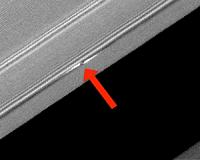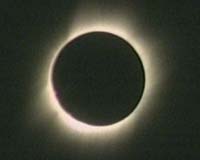|
 Record-Breaking X-ray Blast Briefly Blinds Space Observatory
Record-Breaking X-ray Blast Briefly Blinds Space ObservatoryUniversity Park PA (SPX) Jul 15, 2010 A blast of the brightest X-rays ever detected from beyond our Milky Way galaxy's neighborhood temporarily blinded the X-ray eye on NASA's Swift space observatory earlier this summer, astronomers now report. The X-rays traveled through space for 5-billion years before slamming into and overwhelming Swift's X-ray Telescope on 21 June. The blindingly bright blast came from a gamma-ray burst, a violent eruption of energy from the explosion of a massive star morphing into a new black hole. "This ... read more |
. |
|
|
Free Space, Earth, Energy And Military Newsletters - Delivered Daily |
| . | . |
 |
| .. |
European probe Rosetta successfully flies by asteroid: ESA Paris (AFP) July 11, 2010
Paris (AFP) July 11, 2010The European spacecraft Rosetta performed a fly-by of a massive asteroid on Saturday, the European Space Agency said, taking images that could one day help Earth defend itself from destruction. Racing through the asteroid belt between Mars and Jupiter at 47,800 kph (29,925 mph), the billion-euro (1.25-billion-dollar) probe flew within 3,200 kms (2,000 miles) of the huge potato-shaped rock, L ... more Recipes For Renegade Planets  Moffett Field CA (SPX) Jul 09, 2010
Moffett Field CA (SPX) Jul 09, 2010Over the past two hundred years, a standard model emerged to explain how solar systems form. Using our own solar system as a guide, the model explains the existence of a central star (our Sun), an inner system of rocky, "terrestrial" planets, and an outer system of "gas giant" planets, all orbiting in nearly the same plane of rotation as the central star. Recent discoveries of planetary sy ... more Apollo 16: Footsteps Under High Sun  Washington DC (SPX) Jul 09, 2010
Washington DC (SPX) Jul 09, 2010The lunar module Orion landed in the Descartes Highlands of the moon on April 21, 1972. The Apollo 16 mission targeted a highland region. Originally thought to be a volcanic site, the samples returned by Apollo 16 actually indicated that the highlands of the moon primarily consist of impact-formed rocks (breccias), a substantial scientific result. The featured image is an LROC NAC image of ... more |
.. |
 Saturn Propellers Reflect Solar System Origins  Expedition To Study South Pacific Solar Eclipse  Instant online solar energy quotes Solar Energy Solutions from ABC Solar |
.. |
|
|
Free Space, Earth, Energy And Military Newsletters - Delivered Daily |
|
|
. |
 Rain Of Giant Gas Clouds Create Active Galactic Nuclei
Rain Of Giant Gas Clouds Create Active Galactic NucleiWashington DC (SPX) Jul 09, 2010 Galaxies like our own were built billions of years ago from a deluge of giant clouds of gas, some of which continue to rain down. Now new calculations tie the rain of giant clouds of gas to active galactic nuclei (AGN), the extremely bright centers of some galaxies. If a gas cloud with millions of times more mass than our Sun wanders too close to the center of a galaxy, it can either be consumed by the supermassive black hole that lurks there or, through shocks and collapse, give birth to new star ... read more |
| The contents herein, unless otherwise known to be public domain, are Copyright 1995-2010 - SpaceDaily. AFP and UPI Wire Stories are copyright Agence France-Presse and United Press International. ESA Portal Reports are copyright European Space Agency. All NASA sourced material is public domain. Additional copyrights may apply in whole or part to other bona fide parties. Advertising does not imply endorsement, agreement or approval of any opinions, statements or information provided by SpaceDaily on any web page published or hosted by SpaceDaily. Privacy statement |
| Previous Issues | Jul 14 | Jul 13 | Jul 12 | Jul 09 | Jul 08 |